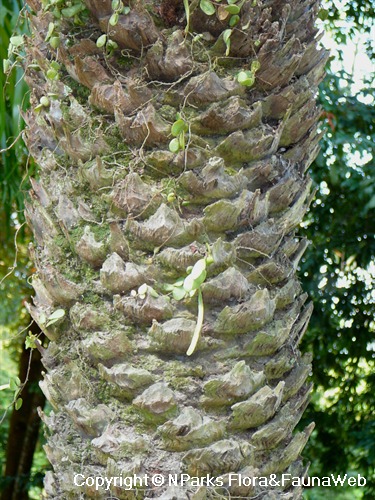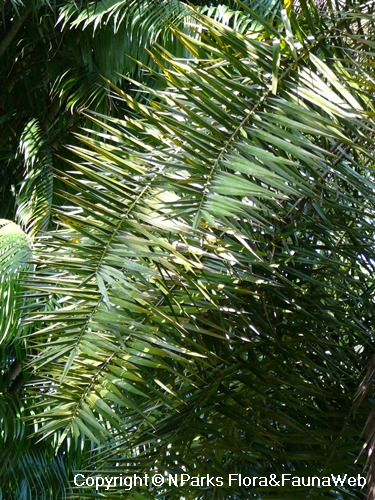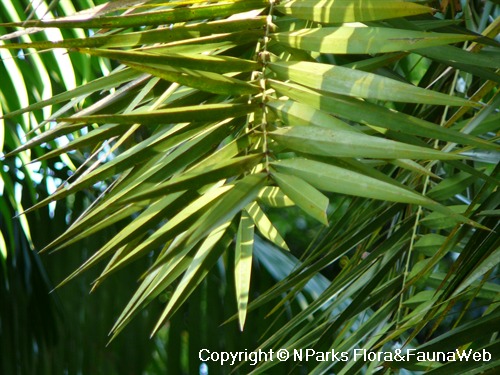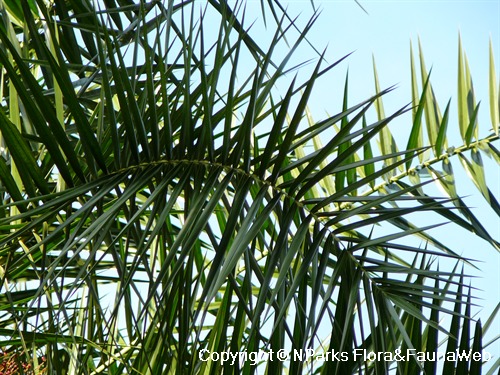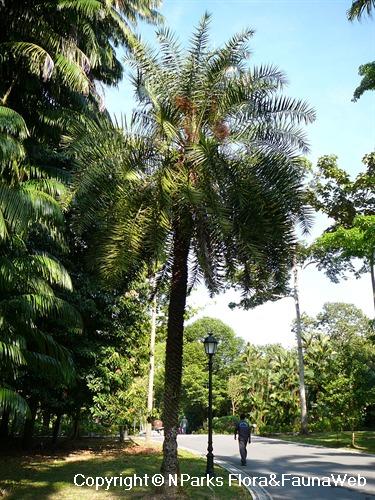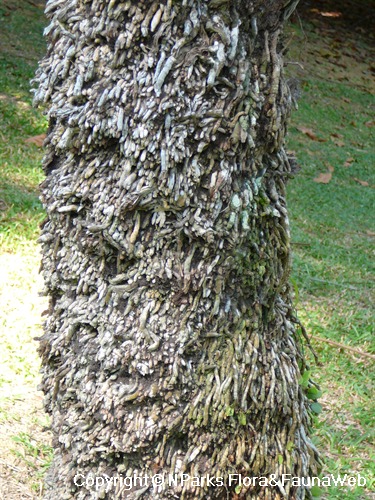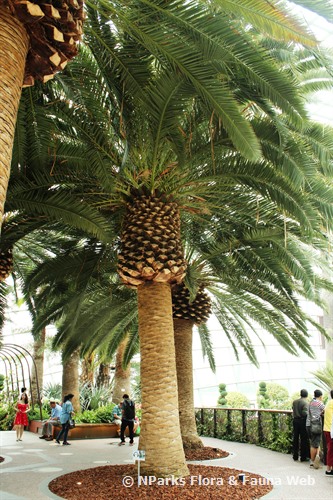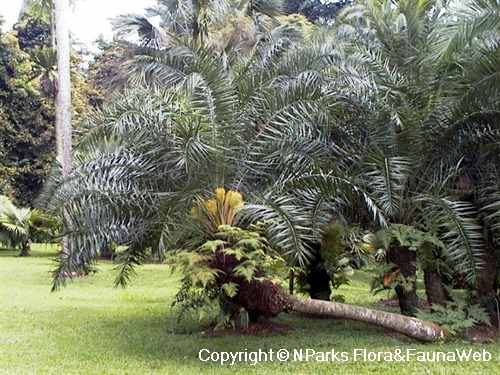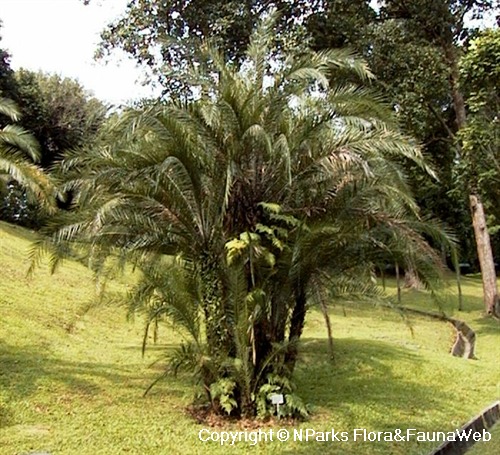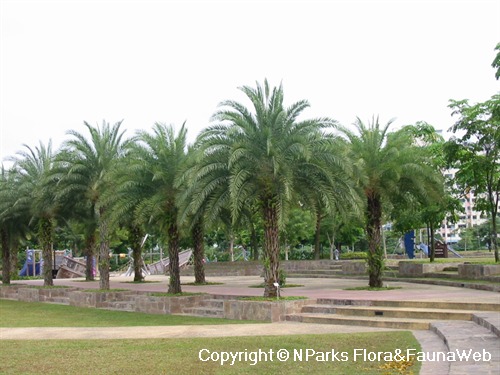
Back
Phoenix sylvestris
| Family Name: | Arecaceae (Palmae) |
| Common Name: | Wild Date Palm, India Date, Silver Date Palm, Sugar Date Palm, Toddy Palm |
Name
Classifications and Characteristics
| Plant Division | Angiosperms (Flowering Seed Plants) |
|---|---|
| Plant Growth Form | Palm (Solitary Habit) |
| Plant Shape | Fountain (Palm-like) |
Biogeography
| Native Distribution | India & Pakistan |
|---|---|
| Native Habitat | Terrestrial |
Description and Ethnobotany
| Crown | Has very dense crown consists about 100 pinnate leaves. No crown shaft. |
|---|---|
| Trunk | Slender. Has swollen base, trunk are cover with persistent old leaf base. |
| Foliage | Blue-green. Pinnate leaves, Armed with leaflets spines(modified leaflet). |
| Fruit | Yellow to orange. Oblong fruit (about 2cm long) containing a single large seed with thin layer of edible flesh. |
| Ethnobotanical Uses | Edible Plant Parts : Edible Fruits Others: The fruits are edible and it taste sweet. The fresh sap from the cut flower buds is fermented into toddy (alcoholic drink) or boiled to make palm jaggery (whole cane sugar). |
Landscaping Features
| Landscape Uses | Interiorscape/ Indoor Plant, Container Planting |
|---|
Plant Care and Propagation
| Light Preference | Full Sun |
|---|---|
| Water Preference | Moderate Water |
| Plant Growth Rate | Moderate |
| Pruning | Need to trim away the old dead leaves which tend to form a 'skirt' around the trunk. |
| Propagation Method | Seed |
Foliar
| Mature Foliage Colour(s) | Green |
|---|---|
| Foliar Shape(s) | Palm Fronds (Pinnate / Feather) |
| Leaf Area Index (LAI) for Green Plot Ratio | 2.5 (Palm - Solitary) |
Non - Foliar and Storage
| Trunk Type (Palm) | Solitary Habit, Aboveground |
|---|
Floral (Angiosperm)
| Flower & Plant Sexuality | Unisexual Flowers , Dioecious |
| Flower Colour(s) | White |
|---|
| Flower Grouping | Cluster / Inflorescence |
| Inflorescence Size | 1 m |
Fruit, Seed and Spore
| Mature Fruit Colour(s) | Red |
|---|---|
| Seed Quantity Per Fruit | Few (1-5) |
Image Repository
Others
| Master ID | 1373 |
|---|---|
| Species ID | 5094 |
| Flora Disclaimer | The information in this website has been compiled from reliable sources, such as reference works on medicinal plants. It is not a substitute for medical advice or treatment and NParks does not purport to provide any medical advice. Readers should always consult his/her physician before using or consuming a plant for medicinal purposes. |

